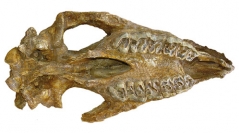

 Geodiversitas
35 (2) - Pages 447-489
Geodiversitas
35 (2) - Pages 447-489The fossiliferous site of Milia (Grevena, N. Greece) is best known for the excavation of the longest tusks of Mammut borsoni (Hays, 1834) in the world (4.39 m and 5.02 m). In association with this species occur the Tapir Tapirus arvernensis arvernensis Croizet & Jobert, 1828, the Rhinocerotidae Dicerorhinus jeanvireti Guérin, 1972 and the Suidae Sus avernensis arvernensis Croizet & Jobert, 1828. The first species is represented by two fossils corresponding to one adult and one juvenile individual, the second species is represented by 197 identified remains among which 68 are measurable specimens corresponding to eight adult and one juvenile individuals, and the third species by nine specimens. The dimensions are compared with those of European Ruscinian and Villafranchian species from the same families: Tapirus arvernensis Croizet & Jobert, 1828 and T. jeanpiveteaui Boeuf, 1991 for the tapir, Dicerorhinus megarhinus (de Christol, 1834), D. miguelcrusafonti Guérin & Santafe, 1978, D. jeanvireti Guérin, 1972 and D. etruscus etruscus (Falconer, 1859) for the rhinoceros, Potamochoerus provincialis (Gervais, 1859), Sus arvernensis Croizet & Jobert, 1828 and S. strozzii Forsyth Major, 1881 for the boar. The association of Tapirus arvernensis arvernensis, Dicerorhinus jeanvireti and Sus arvernensis arvernensis allows us to date the site to biozone MNQ 16 (Earliest Villafranchian). The degree of evolution of the Milia D. jeanvireti population allows us to assign to it an age somewhat younger than that of Vialette. The faunal association is a clear indication of a forested landscape in a warm and relatively wet climate.
Mammalia, anatomy, biometry, biochronology, palaeoenvironment, Early Villafranchian, North-Western Greece